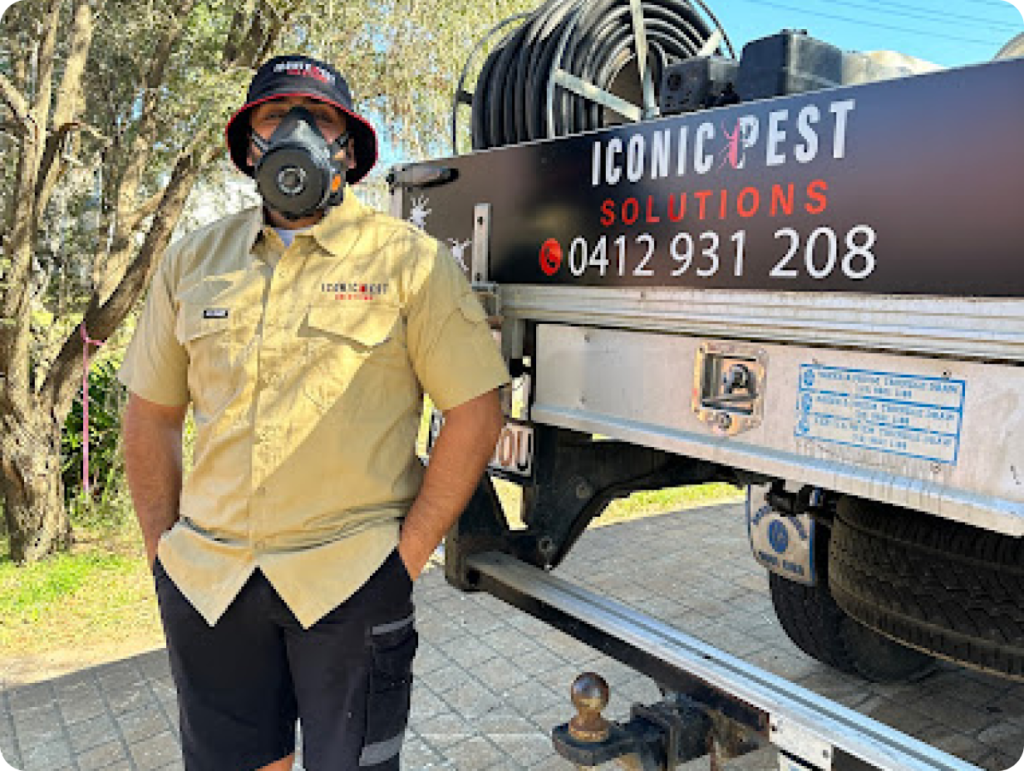Why Do Cockroaches Become More Active During Summer Seasons in Australia?
Cockroaches are a common nuisance during Australia’s warmer months, especially from November to March, when the conditions are ideal for breeding and activity. These pests seek out food, moisture, and warmth, often invading homes and businesses. Signs of infestation include droppings, egg sacs, musty odors, and live cockroach sightings, especially at night. To prevent infestations, focus on sealing cracks and crevices, maintaining cleanliness, and storing food properly. Reducing moisture through fixing leaks and regular cleaning also helps. For severe cases, professional pest control is highly effective in managing and eliminating infestations.
Understanding Cockroaches
#1 Pest Control Company in Sydney
At Iconic Pest Solutions, we build lasting relationships through exceptional
service at competitive prices.
Cockroach Season in Australia
Cockroach Behaviour and Habitat
Behaviour of Cockroaches
Nocturnal Activity: Cockroaches are nocturnal, meaning they are most active at night. This allows them to evade detection while foraging for food and water.
Darkness and Moisture Preference: At night, cockroaches emerge from dark, warm, and moist hiding places, such as cracks, crevices, wall voids, and beneath or behind appliances.
Foraging Patterns: Cockroaches venture out at night in search of food and water. They are scavengers, feeding on almost everything, from food scraps to non-food items like paper and fabric.
Common Cockroach Species in Australia
German Cockroach (Blattella germanica)
American Cockroach (Periplaneta americana)
The American cockroach is a large species, growing up to 50 mm in length, with reddish-brown colouring and a distinctive yellowish figure-eight pattern behind its head. It is commonly found in damp, dark environments such as basements, sewers, and storage areas. American cockroaches are capable of flying short distances and are particularly attracted to humid conditions. While they prefer decaying organic matter, they are less reliant on having immediate access to food sources.
Australian Cockroach (Periplaneta australasiae)
The Australian cockroach is similar in size and shape to the American cockroach but can be recognised by the distinctive yellow band around its thorax. Typically an outdoor species, it is commonly found in gardens and leaf litter, though it may invade homes when it seeks warmth and moisture. Australian cockroaches are capable of flying and often enter buildings during periods of heavy rain or extreme heat waves.
Brown-Banded Cockroach (Supella longipalpa)
The brown-banded cockroach is a small species, measuring between 10-14 mm, and can be easily recognised by the brown bands across its wings. These cockroaches prefer drier, warmer environments and are commonly found in bedrooms, living rooms, and electrical appliances. Unlike other cockroach species, brown-banded cockroaches require less moisture to survive. They tend to cluster in higher locations, such as ceilings or on furniture.
Oriental Cockroach (Blatta orientalis)
Signs of a Cockroach Infestation
Detecting a cockroach infestation early is crucial for control. Common signs include:
Egg Sacs (Oothecae): Cockroaches leave egg sacs in hidden places. They contain many eggs and are usually brown or black.
Droppings: Small, dark bits resembling coffee grounds.
Unpleasant Odour: A musty odour produced by cockroach pheromones, especially in major infestations.
Shed Body Parts: Discarded skins and body parts as cockroaches grow and molt.
Sighting of Live Cockroaches: Live cockroaches are often found at night near food or water, indicating an infestation.
Cockroach Control and Prevention
Cockroaches are prolific pests in Australia, thriving in warm places and known for their adaptability. They are especially active in summer, necessitating both preventative and professional pest control methods.
Prevention Measures to Keep Your Home Safe
Seal Entry Points:
- Cockroaches enter through cracks, crevices, and gaps around windows, doors, and wall cavities.
- Seal entry points by caulking gaps and using weather stripping.
Proper Food Storage:
- Store food in airtight containers to deter pests.
- Avoid leaving pet food out overnight.
- Maintain cleanliness by promptly cleaning up crumbs and spills.
Waste Management:
- Dispose of organic waste and kitchen rubbish regularly.
- Keep compost bins tightly closed.
Maintain Cleanliness:
- Thoroughly clean kitchen sinks, floors, and areas under appliances.
- Clean behind the refrigerator and stove.
Remove Moisture:
- Repair leaks in pipes and faucets.
- Use dehumidifiers in damp areas.
Protecting Your Home and Garden
Inside the House
Inspect and Monitor:
- Check wall cavities, cracks, and crevices in kitchens, basements, and bathrooms.
- Look for droppings, egg sacs, and live insects near water sources.
Maintain Clean and Dry Conditions:
- Keep basements and storage areas clean.
- Eliminate moisture through leak repairs and dehumidifiers.
- Declutter to remove potential hiding spots.
Outside the House
Remove Organic Waste and Debris:
- Keep gardens and outdoor areas clear of organic waste and decomposing plant matter.
- Regularly dispose of compost.
Trim Vegetation:
- Overgrown vegetation near the home creates entry points and harborage for cockroaches.
- Trim plants and bushes to limit hiding areas.
Common Cockroach Species in Australia
Brown-Banded Cockroaches (Supella longipalpa): Known for their preference for warmer, drier habitats.
Oriental Cockroaches (Blatta orientalis): Dark brown to black, live in cooler, damp environments.
Preparing for Cockroach Season
Steps in Preparation Include:
Inspection and Sealing:
- Conduct thorough inspections for signs of invasion, such as droppings and egg cases.
- Seal cracks, crevices, and entry points around doors, windows, and sinks.
- Pay attention to high-humidity areas like basements.
Decluttering:
- Reduce clutter to eliminate potential nesting areas.
Sanitation:
- Maintain cleanliness by wiping down counters, sinks, and floors regularly.
- Monitor for standing water.
Professional Help:
- Seek pest control services for high-level infestations.
Autumn Pest Prevention Tips
Sealing Entry Points: Regularly check and reseal gaps and cracks.
Monitoring for Signs: Look for egg cases, droppings, and live cockroaches
Secure Food Storage: Store food and pet food in airtight containers.
Maintaining Cleanliness: Keep dining areas and sink spaces clean and dry.
#1 Pest Control Company in Sydney
At Iconic Pest Solutions, we build lasting relationships through exceptional
service at competitive prices.
